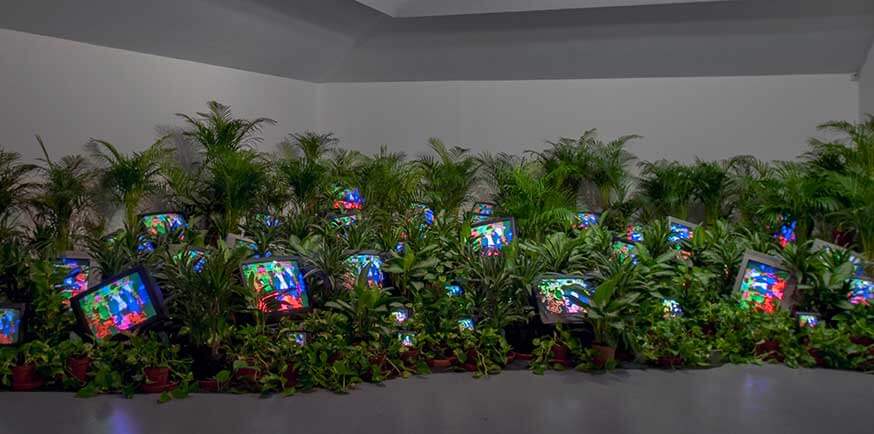Text by CLOT Magazine

Nam June Paik (Seul, 1932 – Miami, 2006), better known as ‘the father of video art’, has transformed with his pioneering vision the approach to technology and, above all, has expanded its expressive potential. The Korean artist has gone down in history for his participation in the Fluxus movement and for his important collaborations with composer John Cage, choreographer Merce Cunningham and cellist Charlotte Moorman (partnerships that have strongly influenced the development of his artistic experimentation), but also because Paik was the first to foreshadow the evolution of communication in the digital age by introducing the concept of ‘electronic superhighway’.
Tate Modern and the San Francisco Museum of Modern Art have organised a tribute exhibition to this incredible forerunner with more than 200 works, covering all the stages of the artist’s career – from early compositions and performances to video and large-scale television installations. The exhibition is curated by Dr Sook-Kyung Lee, Senior Curator of International Art (Hyundai Tate Research Centre: Transnational), Tate, and Rudolf Frieling, Curator of Media Arts, San Francisco Museum of Modern Art, with Valentina Ravaglia (Tate) and Andrea Nitsche-Krupp (SFMOMA).
Tate Modern will open the exhibition with the iconic TV Garden 1974/2002, a work that explores the blurred boundaries between Nature and Tech and will conclude the expo with the brilliant installation Sistine Chapel 1993, recreated for the first time since he was awarded the Golden Lion at the Venice Biennale over 25 years ago. Among the various works, the exhibition will include Paik’s first robot work Robot K-456 1964; TV Cello 1971 and TV Bra for Living Sculpture 1969.
In addition, a specific room will be set up for screening four of Paik’s ground-breaking satellite videos dedicated to Peter Gabriel, Laurie Anderson, David Bowie and Lou Reed. Tate Modern will also partially restage Paik’s pivotal first solo exhibition, Exposition of Music – Electronic Television to show the artist’s early manipulation experiments.






